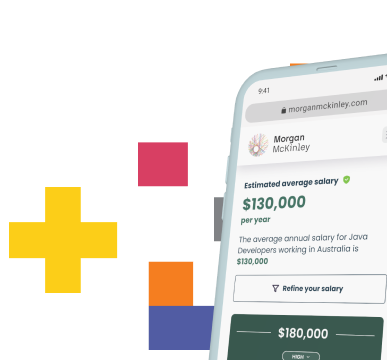A Look into Diversity Inclusion

In this instalment of ‘A look into…’ an experienced HR professional from the transport industry answers questions on the hot topic of Diversity and Inclusion in the workplace.
What is your definition of diversity and inclusion in the workplace?
I love this question as the answer is so personal. I agree completely with:
- Diversity is like the ingredients to a cake and inclusion is the mix or...
- Diversity is giving everyone a ticket to the party and inclusion is feeling like you can dance or not
For me, diversity is all of us, everyone, protected characteristics, sub characteristics, our views, our upbringing, our environment and inclusion is feeling like we belong for who we are, a sense that we are safe to be ourselves, to build relationships, to share opinions, to be the best that we can be.
What is the best piece of advice you can give for getting started with Diversity and Inclusion?
Be real, be yourself, it’s so much easier. Research, research, research, D&I is such a fluid area meaning that any recognised ideas, ways of working and language used can easily become outdated very quickly. You should always feel like you can challenge everything; we have all experienced environments where “that’s just the way it is here” or “oh don’t worry that’s xxxxx they’ve always been like that”. Authenticity saves time and energy, if something isn’t as inclusive as it could be, don’t be afraid to call it out.
How do you get the whole of the company, including the leadership team, on board with Diversity and Inclusion initiatives?
ENERGY!!! You have to be prepared to be a lone voice for a while and take every opportunity to display the benefits of a diverse, inclusive workplace. An inclusion strategy is key to linking organisational values with objectives and everything in between - inclusion threads this work together.
You need to be able to build relationships and effectively communicate the business case for Diversity & Inclusion to senior leaders if you are going to get inclusion to be taken seriously; in organisations, senior leaders need to get it.
What kind of challenges could you anticipate facing when implementing a D&I programme?
Time: Businesses like to see results. We could be talking about a culture change to get colleagues involved in D&I programmes, this won’t happen overnight!
Budget: To get to where you want to be may require a financial investment, for some that could seem like a risk, this is where a strategy linked to business objectives is important but you will still need buy in from budget holders.
“What’s in it for me?”: We are working in environments with less and less time to commit to work outside our remits, D&I programmes, although led by a dedicated D&I professional, may be relying on support and assistance from colleagues across the business going beyond their current roles. This release of time may not be supported by managers or the business or even the individuals.
How do you get around those challenges?
Again, a strategy and strong message around the business case will give you a great foundation. By identifying “inclusioneers”, people with a natural passion for D&I, they can become your mouthpiece across the business.
Storytelling: Letting colleagues know the great work that is going on in the business supporting D&I programmes and initiatives is crucial.
Beyond this, bringing people together is key. We focus so much time networking and building a contacts list outside our organisation, we sometimes neglect to do the same internally. Staff network groups can help keep the conversation current and hold the organisation to account.
How do you counteract comments from leadership such as “we just hire or promote the best person for the job regardless of race or gender”?
There’s a couple of things here. Personally, I couldn’t agree more with the above statement, we should always be looking to hire the best, the challenge is we need to change how and who we attract into our organisations so we truly attract the best applicants, not just the same people. We can back this up with data and reports confirming more diverse and inclusive organisations are more successful organisations.
How do you combat unconscious gender bias in the workplace?
Firstly, don’t be a bystander. If you see it, call it out - this will not change overnight and may need to be challenged again and again and possibly escalated for people to realise what they are doing.
We need to be transparent in areas of the business, like recruitment, promotions, secondments, pay. Gone are the days of a man getting a job because it’s a “man’s job” in certain situations we may need to enforce legislation - in this instance, the Equality Act protects people against discrimination because of your sex.
Learning and Development sessions, either face-to-face or online, raising awareness of unconscious bias are a great way for people to become aware of their own biases.
From a candidate perspective, how do they establish whether a company is as diverse and inclusive as it claims?
Firstly, as a candidate I would be looking at the wording used in any job advert and application. Further to this, I would be talking to anyone I know that is working there about the culture, what D&I initiatives/programmes do they support/run. Another indicator is to look at their marketing as this often reflects the company’s values - is it overtly inclusive?
What are the benefits of employee resource groups?
As mentioned earlier, resource groups are a great way for people from across the business to make contact and build relationships, comparing their own workplace experiences and giving a voice to underrepresented or minority groups within an organisation. I am a strong believer in the saying “nothing about us, without us”. Employee resource groups bring a level of integrity and openness to decision making in an organisation.
As well as holding organisations to account on some decisions, they will also offer support and guidance in areas of the business that do not always affect the majority, this will sometimes negate the possibility of unlawful practices and litigation.
What is the best way to monitor diversity and inclusion in the workplace?
Utilising data; being able to analyse and understand different types of data, both qualitative and quantitative, is the best way of monitoring D&I progress. You can also get a good understanding by asking the staff through staff surveys.
Less scientific, but in my opinion no less important; how does it feel to be in a workplace, do I belong here? How do I feel working here? Am I happy/proud/productive? Can I fulfil my potential?














